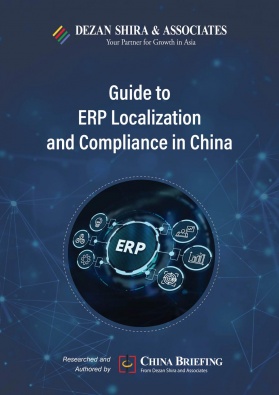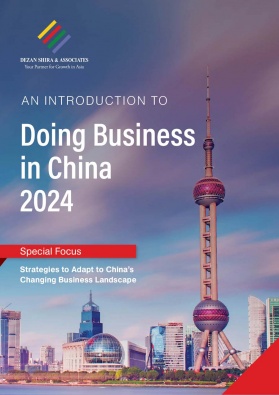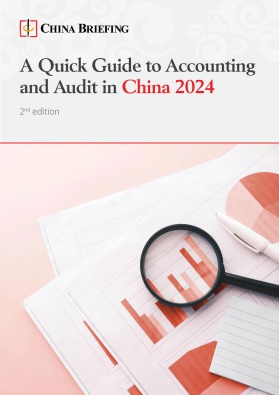Investing in Zhangjiagang, Jiangsu Province: Economy, Key Industries and Opportunities
Zhangjiagang, located in the south bank of the Yangtze River in East China’s Jiangsu province, is a key trade and investment hub and an important transport link to Suzhou and Shanghai. The city is enjoying a period of rapid development and economic growth and is seeking to attract more investment in strategic and emerging industries. We discuss the city’s economy, industries, and competitiveness as a major manufacturing and logistic hub and provide an overview of the preferential policies available to foreign investors.
Zhangjiagang (in Chinese, 张家港), located in the lower reaches of the Yangtze River in East China’s Jiangsu province, is a vibrant county-level city covering 999 square kilometers, with 777 square kilometers of land. In recent years, the city has emerged as a significant port and industrial hub, strategically positioned at the confluence of the coastal and Yangtze River economic development zones.
Zhangjiagang’s strong transportation network, featuring river and sea ports, airports, expressways, highways, and railways, enables a smooth transportation of goods and people, driving the city’s economic growth.
Administratively, Zhangjiagang oversees eight towns and two districts, each contributing to the city’s diverse economic landscape. In 2023, Zhangjiagang retained its status as the third strongest county among China’s top 100 counties, underscoring its sustained economic growth and development.
Economy of Zhangjiagang
Zhangjiagang, one of the eight medium-sized cities in Jiangsu Province, stands out with a robust economic profile despite its smaller population. In 2023, the city had a permanent population of 1.08 million and an urbanization rate of 75.1 percent, achieving a total GDP of RMB 336.58 billion (US$46.45 billion).
Strategically located on the south bank of the lower Yangtze River, it benefits from proximity to major cities like Shanghai, Suzhou, Wuxi, and Nantong. Zhangjiagang is an emerging port industrial city with significant industrial parks and enterprises, contributing to its economic strength. Its development is on par with larger prefecture-level cities, reflecting Jiangsu province’s comprehensive economic growth.
The secondary sector is the largest component of Zhangjiagang’s economy, accounting for 50.0 percent of its GDP. This sector saw significant growth in 2023, with its added value increasing by 3.6 percent, reaching RMB 168.13 billion (US$23.20 billion). The tertiary sector followed closely, contributing 49.1 percent to the GDP and growing by 3.6 percent compared to 2022, with an added value of 165.336 billion (US$22.82 billion). Although the primary industry represents a smaller portion of the economy, it experienced robust growth in 2023, with its added value rising by 5.6 percent year-on-year to RMB 3.10 billion (US$429.13 million).
Foreign trade and investment in Zhangjiagang
Despite Zhangjiagang’s relatively small population, the city demonstrates substantial economic strength across various sectors. In 2023, its transportation infrastructure experienced rapid development, with cargo transportation turnover surging to 7.365 billion ton-kilometers, marking a 7.4 percent increase from the previous year. Port cargo throughput also grew, reaching 252 million tons, a 3.3 percent rise, solidifying Zhangjiagang’s role as a key player in trade and commerce.
Throughout the year, 76 new foreign-invested enterprises were approved, bringing in an additional registered foreign investment of US$1.174 billion. Moreover, the actual use of foreign investment amounted to US$581 million.
The city initiated 38 new overseas investment projects in 2023, with the Chinese side committing US$513 million. The actual investment, including reinvestment, reached US$372 million, reflecting significant international investment activity and cooperation in the region.
However, foreign trade experienced a downturn, with the total import and export volume declining by 8.5 percent year-on-year to RMB 283.51 billion (US$39.12 billion) in 2023. Imports dropped by 10.7 percent to RMB 155.93 billion (US$21.52), while exports fell by 5.8 percent to RMB 127.58 billion (US$17.60 billion). General trade, which made up 88.4 percent of the total trade volume, reached RMB 250.53 billion (US$34,58), marking a decrease of 8.0 percent.
Successful investment stories from German companies in Zhangjiagang
Zhangjiagang is experiencing a notable uptick in collaborations with German companies, with over 200 now operating in the city, drawn by its supportive business environment and exceptional services.
Noteworthy investments and cases include:
- Spotlight Automotive, a joint venture between BMW Group and Great Wall Motor, set up shop in the Zhangjiagang Economic and Technological Development Zone. This massive facility, with a staggering investment of RMB 5.1 billion (US$705.29 million), commenced operations in 2020.
- Wacker, a stalwart in the German chemical industry, has been steadily expanding its footprint in Zhangjiagang since 2004. The company is currently involved in a substantial project aimed at producing a whopping 9,000 metric tons of organic silicon rubber each year.
- Merck, another German giant, has also made significant strides in Zhangjiagang, particularly in localizing its semiconductor business. In a landmark move in May 2022, Merck signed a hefty agreement to erect a plant dedicated to semiconductor thin films and electronic special gases. This endeavor represents Merck’s largest single investment in China to date, ringing in at RMB 550 million (US$75.90 million).
- Continental’s Surface Solutions Business Unit in the Asia-Pacific region has joined the fray, solidifying its presence in Zhangjiagang with the establishment of the Benecke Changshun Research and Development Center in April 2022. This ambitious project, backed by an investment of RMB 200 million (US$27.6 million), is poised to cater to a vast network of over 60 top-tier automotive parts suppliers and more than 20 major automobile manufacturers.
Moreover, in recent years, Zhangjiagang has become a hub for top automotive and auto parts manufacturers. Notable players such as Great Wall Motors, ZF Group, Magna International, and JATCO have all established a presence in the city. This trend perfectly aligns with Zhangjiagang’s goal of creating a dynamic trillion-yuan automotive industry innovation cluster.
Throughout history, German and Austrian businesses have found Taicang to be highly attractive for conducting business. Some German analysts even likened it to a model city in China. Now, neighboring areas like ZJG are actively welcoming central EU businesses, particularly German and Austrian small and medium enterprises, as well as a few multinational corporations. This topic will also be part of the discussion in Munich this Thursday.– Riccardo Benussi, Partner at the Munich-Milan Office, Dezan Shira & Associates
Major industries in Zhangjiagang
In 2023, Zhangjiagang witnessed a robust economic performance across its diverse sectors, with particular emphasis on its industrial landscape. The city’s industrial output reached an impressive total of RMB 563.832 billion (US$77.83 billion), showcasing steady growth and optimization.
The equipment manufacturing sector reached a production value of RMB 84.098 billion (US$11.61), marking a significant 5.8 percent increase year-on-year. This sector’s added value also surged by 7.8 percent, indicating a strong foundation for sustained growth.
In particular, the automotive industry emerged as a standout, achieving a remarkable production value of RMB 26.938 billion (US$3.71 billion), representing a notable 16.2 percent increase.
Additionally, Zhangjiagang’s high-tech industry played a vital role, contributing 39.4 percent to the city’s total industrial output value, amounting to RMB 222.042 billion (US$30.65). This growth surpassed the previous year’s figures by 0.5 percentage points, demonstrating the city’s commitment to innovation and technological advancement.
The construction industry also showed resilience, with a total output value of 25.183 billion yuan, driven by a substantial increase in completed construction value, which soared by 40.3 percent to reach RMB 213.42 billion (US$29.46).
Opportunities in emerging industries
Green energy: Focus on hydrogen
Zhangjiagang is leading the charge in hydrogen energy, shifting from traditional manufacturing to innovation-driven growth. With strong foundations in steel and chemical industries, the city is building a comprehensive hydrogen energy ecosystem.
The CRRC Hydrogen Power Industrial Park in Zhangjiagang Bonded Zone showcases this commitment, with five buildings for research, development, and testing, plus a hydrogen fueling station handling 500 kilograms daily. These investments highlight Zhangjiagang’s dedication to sustainable technologies.
Creating an innovation-friendly environment the city has attracted over 30 hydrogen-related enterprises, such as Jiangsu Guofu Hydrogen Energy Technology and CIMC Sanctum. Together, they form an integrated industrial chain covering production, storage, transportation, and fuel cells. The city aims to host 50 hydrogen energy firms by 2025, with an annual output value exceeding RMB 20 billion (US$2.76 billion).
Technological advancements are driven by research platforms like the Suzhou Hydrogen Energy Industry Innovation Center and the Zhangjiagang Industrial Technology Research Institute. Collaborations between enterprises and research institutions have led to significant breakthroughs, such as Huachang Energy’s 120kw hydrogen fuel engine with 60 percent system efficiency and 20,000-hour lifespan.
Zhangjiagang is exploring various hydrogen energy applications, including hydrogen-powered port tractors and versatile energy stations providing hydrogen, oil, and electricity.
Healthcare and pharmaceutical
Zhangjiagang is rapidly solidifying its position as a key hub for the healthcare and biomedicine sectors, marked by significant recent developments. For instance, Porton Pharma Solutions Ltd established a groundbreaking drug manufacturing base, while the MediCore Medical Equipment Industry Innovation Port commenced operations.
In February 2023, the city inked a landmark deal with Porton Pharma Solutions Ltd to construct a RMB 5-billion (US$726.28 million) pharmaceutical manufacturing base in the city’s Free Trade Zone. This facility will specialize in developing and producing innovative drug intermediates and active pharmaceutical ingredients.
In tandem, the MediCore Medical Equipment Industry Innovation Port, inaugurated in March 2023 in Jinfeng Town, represents a pivotal addition. With a total investment of RMB 3.8 billion (US$524 million), this innovation port forms a crucial component of the Zhangjiagang Medical Equipment High-tech Industrial Park. Already hosting 15 leading companies like Canhelp Genomics and Veminsyn, it has also secured agreements for 12 additional projects valued at RMB 2.8 billion (US$407.07 million). The port aims to establish a comprehensive industrial chain, encompassing a research and development center, a testing facility, a public laboratory, and an investment and financing platform.
Moreover, a key project is underway in biotechnology genetic engineering, with a focus on gene sequencing for animal samples and antibiotic-free aquaculture products. With a RMB 650 million (US$89 million) investment, it aims to address antibiotic replacement in animal breeding and is projected to achieve one billion yuan in sales.
High-tech
Zhangjiagang’s high-tech sector is also thriving. One prominent project is the Zhangjiagang Intelligent Manufacturing Big Data Industrial Park in Leyu Town. Backed by a RMB 9 billion (US$1.26 billion) investment from Gangcheng Yunlian (Suzhou) Data Systems Co., Ltd., the park spans 14.2 hectares and is poised to become one of the largest data centers in the Yangtze River Delta. It features 11 data centers, a substation, and an operation center, with a goal of generating over 2 billion yuan annually once fully operational.
With agreements secured with major players like China Mobile, China Telecom, and China Unicom, it offers customizable, cost-effective computing services.
Another significant initiative is the Fanchuang Intelligent Optical and Video Industry Base in the Zhangjiagang Free Trade Zone, with a RMB 2 billion (US$276 million) investment. This base focuses on developing optical products for automobiles, intelligent lighting systems, face recognition, and public-security video monitoring, targeting annual sales exceeding RMB 5 billion (US$690 million).
Additionally, the Chuangshun Innovation Valley project aims to evolve into a comprehensive industry park, accommodating 28 companies in high-end equipment manufacturing, medical devices, and scientific and technological services, further enriching Zhangjiagang’s thriving high-tech ecosystem.
Key development zones in Zhangjiagang
Zhangjiagang Bonded Zone
The Zhangjiagang Bonded Zone, established with State Council approval in 1992, was among the pioneering special customs supervision zones. In 2008, it underwent a transformation into a bonded port, expanding its administrative area to cover 132 square kilometers. Currently, it accommodates more than 9,000 enterprises, including over 30 from the Global Fortune 500 list and six locally listed enterprises. Renowned as a vital international industrial hub situated within the Yangtze River delta, it serves as a modern industrial hub and a pivotal commodity distribution center.
Recognized with prestigious titles such as the Yangtze River Economic Belt State-level Transformation and Upgrading Model Development Zone, the Country’s Most Investment Potential Economic Park, and National Ecological Industry Demonstration Park, the zone stands as a testament to its significance and contribution to regional and national economic development.
Zhangjiagang High-tech Industrial Development Zone
Construction of the Zhangjiagang High-tech Industrial Development Zone (ZHIDZ) began on November 12, 2015, after approval by the Jiangsu government. It covers a vast area of 23.1 square kilometers.
The Zone established its Party Working Committee and Management Committee on July 31, 2017, along with ZETDZ and Yangshe Town, implementing the “One Town and Two Zones” administrative system.
ZHIDZ aims to become a hub for industry, science, technology, innovation, and ecology. It focuses on nurturing strategic emerging sectors like semiconductor technology, green energy, intelligent equipment, remanufacturing, big data, and artificial intelligence.
So far, ZHIDZ has attracted many notable domestic and international companies, such as GCL System Integration Technology Co., HC SemiTek Corporation, and Zhangjiagang Furui Special Equipment Co. It has also developed the Shazhou Lake Technological Innovation Park, recognized as the first national demonstration base for the remanufacturing industry and a national science and technology enterprise incubator.
Yangtze Metallurgical Industrial Park
Located in Jinfeng Town, Zhangjiagang, Jiangsu, the Yangtze Metallurgical Industrial Park (YMIP) has earned numerous accolades, including being designated as a National Health Town, China’s Green Town, and China’s Environmental Beautiful Town. It has also consistently received the National Civilized Town title.
Covering an area of 114 square kilometers, YMIP is home to over 1,400 diverse enterprises, including major players like Shagang Group and Pohang Iron and Steel Co., among others listed in the Global Fortune 500.
The industrial park focuses on four main industries:
- Metallurgy;
- New-type construction materials;
- Mechanical equipment; and
- Medical devices.
Additionally, it houses eight industrial hubs, including the Jiangsu Metallurgical Technology Research Institute, a high-end industrial cluster, Jiulong Logistics Park, and Shazhou Building.
Zhangjiagang Economic and Technological Development Zone
The Zhangjiagang Economic and Technological Development Zone spans 153 square kilometers and is inhabited by a population of 530,000.
Key emerging industries in the zone include:
- Intelligent equipment;
- Robotics;
- Green energy;
- Lighting;
- Smart grids;
- Chips; and
- Remanufacturing.
Hosting three national industrial bases—the PV industry demonstration base, the National Film, Television, and Network Animation Experimental Park, and a remanufacturing industry demonstration base—the zone also features provincial-level industrial parks, including a modern equipment manufacturing industrial park, an international service outsourcing demonstration zone, and a special equipment for energy conservation and technology industrial park.
Notable ongoing projects include the International Business District, Denmark Eco Technology City, and the Valley of E-commerce. The zone has established the national high-tech innovation service center, Technology Park, along with other national innovation and entrepreneurship hubs.
The zone has already attracted leading domestic and foreign enterprises such as GCL System Integration Technology Co., HC SemiTek Corporation, and Zhangjiagang Furui Special Equipment Co. It has also developed the Shazhou Lake Technological Innovation Park, serving as the first national demonstration base for the remanufacturing industry and a national science and technology enterprise incubator.
With a focus on becoming a modern industrial agglomeration area, a technological innovation demonstration zone, a pilot for development and opening-up, and a pleasant city for residents and visitors, the zone is committed to fostering sustainable growth and innovation.
About Us
China Briefing is one of five regional Asia Briefing publications, supported by Dezan Shira & Associates. For a complimentary subscription to China Briefing’s content products, please click here.
Dezan Shira & Associates assists foreign investors into China and has done so since 1992 through offices in Beijing, Tianjin, Dalian, Qingdao, Shanghai, Hangzhou, Ningbo, Suzhou, Guangzhou, Dongguan, Haikou, Zhongshan, Shenzhen, and Hong Kong. We also have offices in Vietnam, Indonesia, Singapore, United States, Germany, Italy, India, and Dubai (UAE) and partner firms assisting foreign investors in The Philippines, Malaysia, Thailand, Bangladesh, and Australia. For assistance in China, please contact the firm at china@dezshira.com or visit our website at www.dezshira.com.
- Previous Article China’s Enhanced Beneficiary Owner Filing System: Key Points of New Measures
- Next Article Managing Recruitment Risks in China: A Comprehensive Approach








